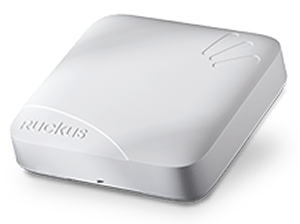Reynoldsburg City SD Updates Wireless Network
Reynoldsburg City School District in Ohio
has upgraded its wireless network from 802.11n to the latest 802.11ac standard,
which is designed to provide more reliable, faster and higher capacity WiFi
service than its predecessor.
The wireless network at Reynoldsburg City Schools serves 7,500 students and
faculty across 14 schools. The district's 1-to-1 initiative provides Chromebooks
for students and staff, and they use the wireless network to access educational
applications, a student information system and administrative applications. The
district also provides guest access to the wireless network. The existing
802.11n wireless network couldn't keep up with the demand from so many devices,
so the district decided to upgrade to the latest technology.
After evaluating systems from Aruba, Cisco Meraki and HP, they selected a
Ruckus ZoneFlex R700 802.11ac system with 405 ZoneFlex R700 Smart WiFi
access points. The ZoneFlex R700 is a dual-band, three-stream access point that
uses the Ruckus BeamFlex+ adaptive antenna array technology. According to the
company, "BeamFlex+ helps to significantly extend the range and speed of indoor
WiFi networks" to provide high reliability and gigabit-class performance. 
According to Will Kerr, technology director for the district, the Ruckus
system enabled the district to speed up its deployment plan while saving money.
"With Ruckus, we were able to install fewer but more industrial strength APs
that could cover additional locations that I just couldn't resolve with other
suppliers," he said in a prepared statement. "So, my original two-year
deployment plan using a cloud-based WiFi alternative that forced us into a
subscription model could be reduced to a one-year plan, and at a substantially
lower cost."
The district uses the Ruckus infrastructure with its iBoss network security
system and Microsoft Active Directory authentication domain "to automate policy
enforcement and content filtering based on user authentication," according to
the company. The district also uses Ruckus ZoneDirector 5000 controllers located
in its network operations center to centrally manage the wireless network.
According to Ruckus, an increasing number of school districts, colleges and
universities are moving to 802.11ac technology to provide more reliable, faster
and higher capacity WiFi services. "WiFi has become the primary means of
connectivity, and it absolutely must operate as reliably as any utility," said
Kerr in a prepared statement. "Conventional WiFi technology was never really
designed with this in mind."
About the Author
Leila Meyer is a technology writer based in British Columbia. She can be reached at [email protected].